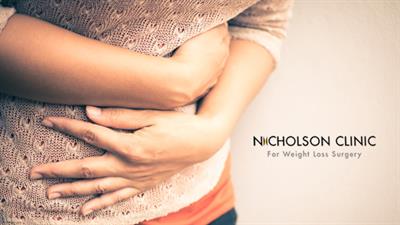
Hernias affect millions of people worldwide and occur due to a variety of reasons. A hernia is a condition when part of an organ bulges through a weak point in the abdominal muscle. The most common types of hernias are inguinal (inner groin), incisional (resulting from an incision), femoral (outer groin), umbilical (belly button) and hiatal (upper stomach – this is the one that causes acid reflux.) One lesser-known type of hernia is one that occurs in the abdominal wall following breast cancer removal and breast reconstruction.
Causes of hernia
Hernias may result from:
- Trauma — heavy lifting, injury, a penetrating wound, even childbirth.
- Genetics — many people are born with a congenital hernia.
- Prior Surgeries — an estimated 15 to 20 percent of incisions may not heal properly at the muscular level and hernia may form as a result, such as after spinal surgery or breast cancer reconstruction.
Symptoms of hernia
The most obvious symptom of an abdominal wall hernia is an abdominal bulge. Other symptoms may include pain, nausea, hearing or seeing intestinal movements within the bulge and/or a cramping and/or bloating sensation.
Hernia after breast cancer reconstruction
Many breast cancer patients chose to use skin tissue from other areas of their body, rather than silicone implants, to rebuild the shape of their breasts after surgery to remove cancer. During this breast reconstruction surgery, a “flap” is created using the patient’s own skin, fatty tissue and sometimes muscle to form a new breast.
There are various types of autologous flap procedures, but tissue for reconstructing the breast most often comes from your abdomen, such as in a TRAM (transverse rectus abdominis muscle) flap, a DIEP (deep inferior epigastric perforator) flap, and a SIEA (superficial inferior epigastric artery) flap.
TRAM flaps are the most commonly performed type of flap reconstruction, but they are also the most high-risk for developing a bulge or hernia because these procedures take all or part of the underlying rectus abdominus (your “six-pack” muscle) along with skin and fat to reconstruct the breast. The DIEP and SIEA flap procedures spare the muscle completely which helps preserve core strength and minimize risk of a bulge or hernia, however, if the nerves that power the muscle are compromised, it can become paralyzed and lose strength. This makes the abdominal wall weaker and more prone to a hernia or bulge.
Treatment for hernia after breast cancer reconstruction
Hernias don’t go away on their own and will only grow larger and get worse over time, causing more pain and discomfort, so it’s important to have them addressed. Surgery is typically the recommended treatment to ensure the hernia is fully repaired.
If you have a hernia that has occurred as a result from a flap procedure, Nicholson Clinic can help. We specialize in hernia repair and abdominal wall reconstruction. During the procedure we will replace any herniated organs within the abdominal cavity, close the hernia and reinforce the area to make it strong.
Dr. Thomas Roshek, Nicholson Clinic Abdominal Surgeon partners with Dr. Trovato, Plastic Surgeon with Dallas Plastic Surgery Institute to combine an abdominal wall reconstruction with any other body contouring procedure during the hernia repair. Any further remaining excess skin is removed, and the muscles are reconstructed and tightened, improving the shape and strength of the underlying support tissue. This creates the tighter, smoother appearance of the abdomen, pelvis, and core.
If you are experiencing a hernia and interested in repair and abdominal wall reconstruction, contact the Nicholson Clinic to make an appointment with me for a medical evaluation and to discuss options. If the hernia repair is due to a breast cancer removal and reconstruction, it is typically covered by insurance.












